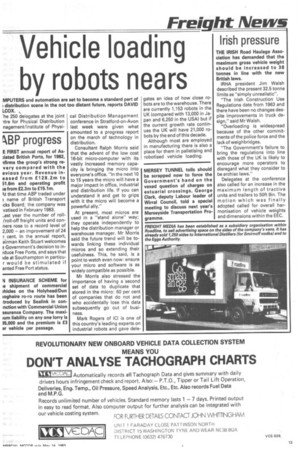Vehicle loading by robots nears
Page 15

If you've noticed an error in this article please click here to report it so we can fix it.
MPUTERS and automation are set to become a standard part of r distribution scene in the not too distant future, reports DAVID LCOX.
he 250 delegates at the joint Ire for Physical Distribution nagement/lnstitute of Physi cal Distribution Management conference in Stratford-on-Avon last week were given what amounted to a progress report on the march of technology in distribution.
Consultant Ralph Morris said that the advent of the low cost 16-bit micro-computer with its vastly increased memory capacity is bringing the micro into everyone's office. "In the next 10 to 15 years the micro will have a major impact in office, industrial and distribution life. If you can understand it and get to grips with it the micro will become a powerful ally."
At present, most micros are used in a "stand alone" way; they operate independently to help the distribution manager or warehouse manager. Mr Morris said the future trend will be towards linking these individual micros and so extending their usefulness. This, he said, is a point to watch even now: ensure your micro and software is as widely compatible as possible.
Mr Morris also stressed the importance of having a second set of data to duplicate that stored in the micro: 60 per cent of companies that do not and who accidentally lose this data subsequently go out of business.
Mark Rogers of ICI is one of this country's leading experts on industrial robots and gave dele gates an idea of how close robots are to the warehouse. There are currently 1,153 robots in the UK (compared with 13,000 in Japan and 6,250 in the USA) but if the current growth rate continues the UK will have 21,000 robots by the end of this decade.
Although most are employed in manufacturing there is also a place for them in palletising and robotised vehicle loading.




























































































